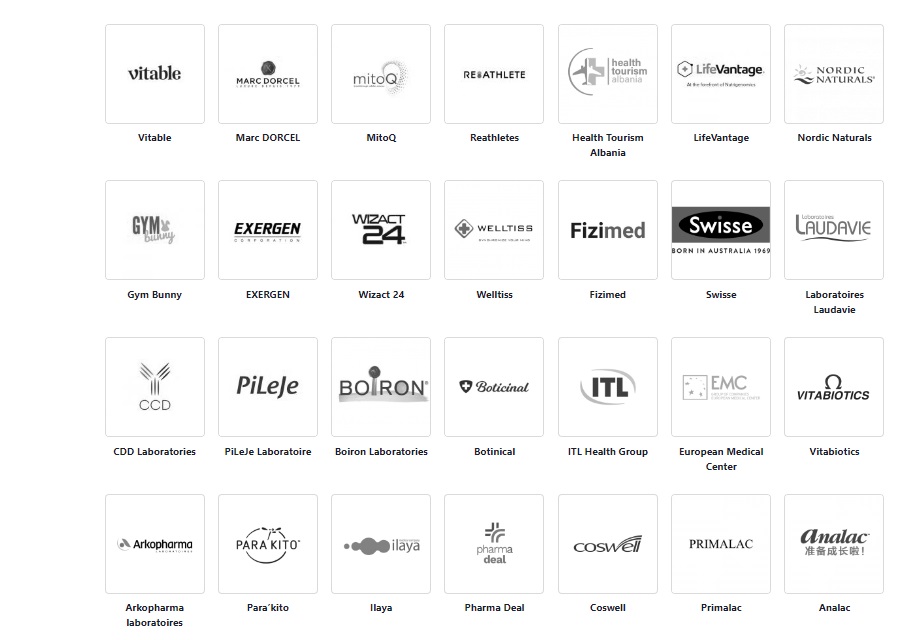The health market in China has undergone remarkable changes recently due to factors like changing demographics, technological advancements, and evolving consumer preferences. China’s significance as a global powerhouse and its vast population makes its health market a crucial player in both national and international healthcare developments. It is estimated to reach $2.4 trillion by 2030!
This article delves into the dynamics of China’s health market, highlighting the trends shaping its growth, the hurdles it faces, and the exciting opportunities for local and global stakeholders. Whether you’re a healthcare professional, investor, or someone curious about the future of healthcare in the global market, understanding China’s health market offers insights into the broader transformation of the industry worldwide.
Overview of China’s Healthcare Market
China’s healthcare industry is characterized by its sheer size and diversity. With a population of over 1.4 billion people, the demand for healthcare services is substantial. The aging population, coupled with lifestyle changes, has led to a surge in chronic diseases and a growing need for quality healthcare services across all age groups.
China’s healthcare market is growing incredibly fast, with an expected annual growth rate of about 12%. This speedy expansion means there are big chances for investment and growth in this field.
According to McKinsey, China’s healthcare market is leading in global growth and is affecting healthcare all around the world. Just the pharmaceutical part of it was predicted to be worth $332 billion in 2022, showing how important and expandable it is.

Important Healthcare Market Numbers
- Expected Growth Rate (2023-2027): 8.83%
- Estimated Size of Healthcare Market in 2027: $26.75 billion
- Estimated Value of Healthcare Sector by 2030: $2.4 trillion
- Value of Over-the-counter (OTC) Healthcare Market in 2021: $24.6 billion
- Expected Growth Rate (CAGR) of OTC Healthcare Market: More than 3%
The potential for growth in China’s healthcare market is huge. The reasons for this include a growing elderly population, strong economic growth, and the healthcare industry getting bigger. Now, foreign companies have a great chance to take advantage of these exciting opportunities.
What is driving the growth of the health market in China?
The growth of the health market in China is being propelled by a combination of factors that reflect the nation’s evolving demographics, societal changes, and technological advancements.
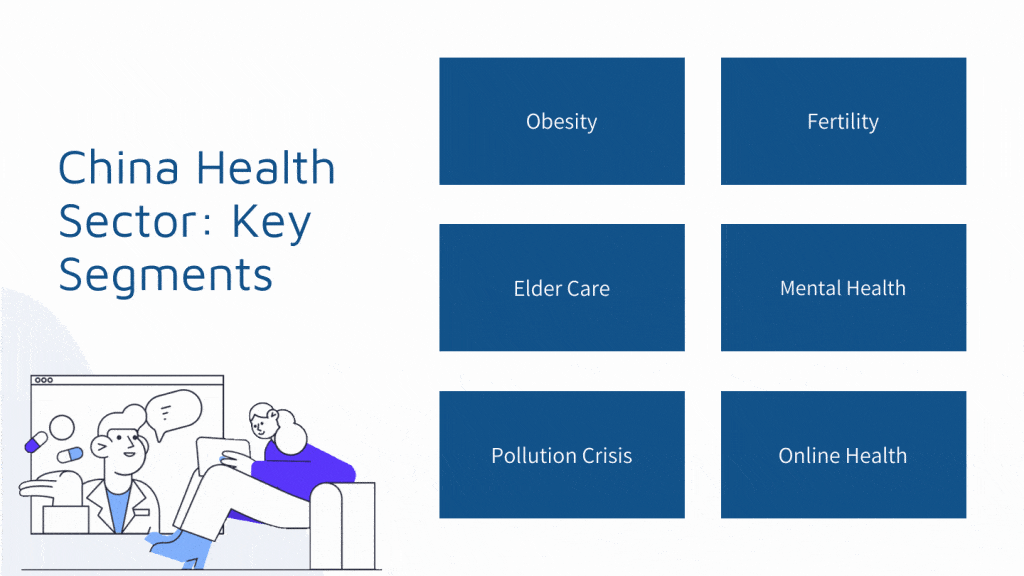
Fertility and Reproductive Health
With a growing emphasis on family planning and reproductive health, fertility treatments and services have gained traction. Couples are seeking assistance for conception in the health sector, leading to the growth of fertility clinics and related healthcare services.
Mental Health Awareness
Changing attitudes towards mental health have driven the demand for psychological services, counseling, and therapy. As stigma surrounding mental health diminishes, individuals are seeking professional help for their emotional well-being.
Pollution Crisis Impact
China’s pollution crisis has raised concerns about respiratory health and led to a surge in demand for respiratory treatments, air purification devices, and medical services addressing pollution-related health issues.
Obesity Concerns
Rising obesity rates in China have led to a greater focus on health and wellness. As people become more health-conscious, there is an increasing demand for fitness, dietary guidance, and weight management services. The percentage of overweight or obese children has skyrocketed from 5 to 20 percent. For instance, in 2020, about 10.4 percent of children under 6 years in China were overweight or obese.
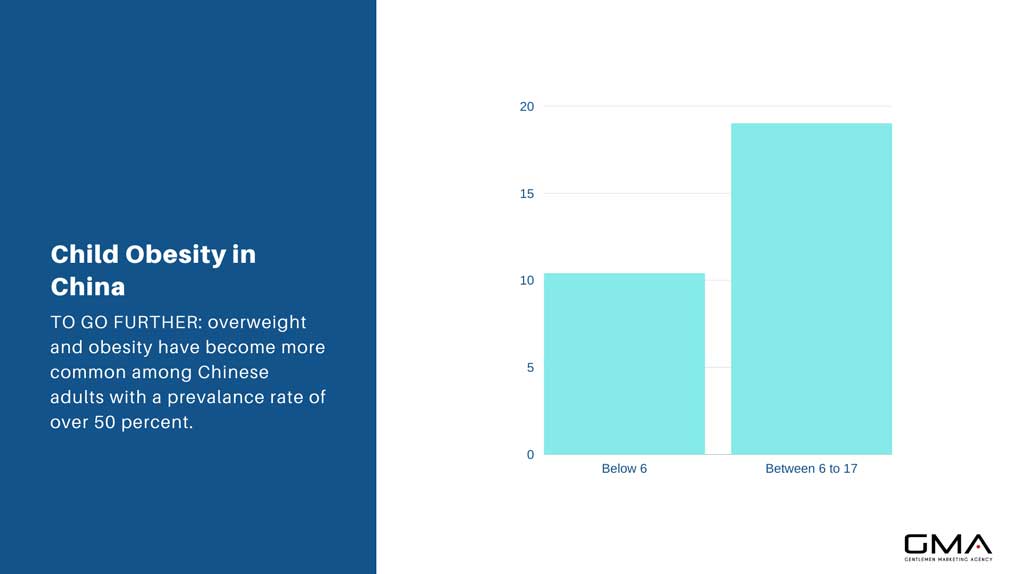
Online Health Services
The digital revolution has enabled the growth of online health services, including telemedicine, health apps, and virtual consultations. This trend has made healthcare more accessible, especially in remote or underserved areas.
Medical Devices and Technology
Technological advancements in medical devices have driven growth in diagnostics, monitoring, and treatment. Innovations such as wearable health devices, remote monitoring tools, and advanced imaging systems have become integral to healthcare.
Elder Care Services
China’s aging population has spurred demand for elder care services, including nursing homes, home care, and specialized medical facilities. This demographic shift has created opportunities for healthcare providers catering to the needs of senior citizens.
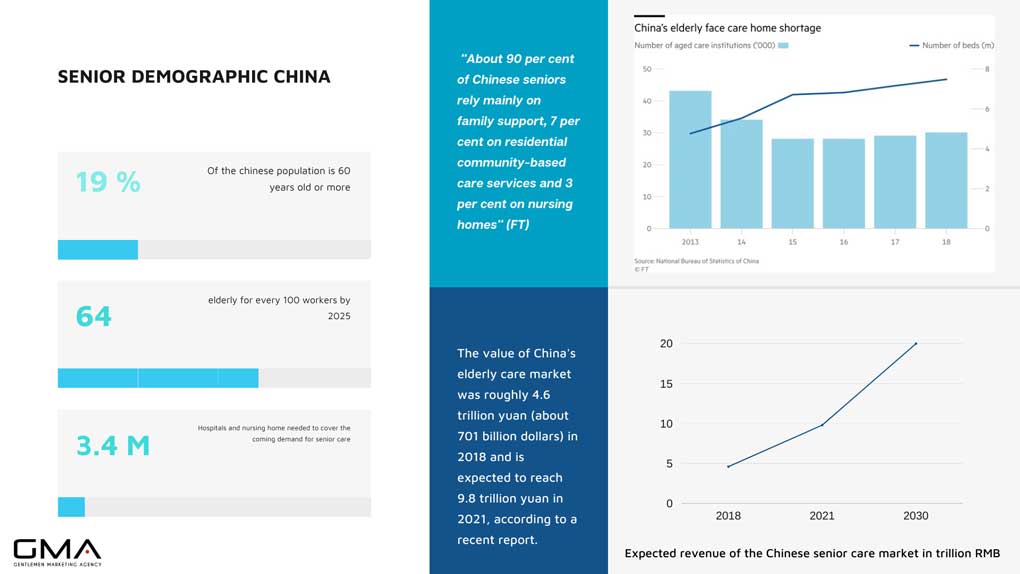
Traditional Medicine and Holistic Health
The enduring significance of Traditional Chinese Medicine (TCM) has led to a demand for holistic health solutions. TCM’s integration with modern practices has created a unique healthcare landscape catering to diverse preferences.
Reforms of the healthcare market in China
The current healthcare system reflects the ongoing structural changes, with increasingly unequal access to quality care, due to insufficient health insurance coverage and a heterogeneous organization of the health system.
As a result of the disappearance of the management system by the working units and the people’s communes and less-developed prevention, part of the farmers and the urban population still have limited access to care, it is a question of assuming long, expensive, and/or chronic treatments.
The recognition of these difficulties and evolutions in progress has led the Chinese authorities to want to initiate reforms.
The SARS crisis in 2003 (Severe Acute Respiratory Syndrome) and the various recurrent food and safety scandals (e.g. melamine milk in 2008) led health authorities to initiate several attempts to overhaul the system and Of health insurance, without much success.
But since 2006, after the complete reorganization of the health surveillance and surveillance system in the aftermath of SARS, reform of the health system is underway to establish a system of basic medical care and medical insurance accessible to all. This is a complex task as all sectors of health are engaged in these changes.

The new healthcare reform aims to:
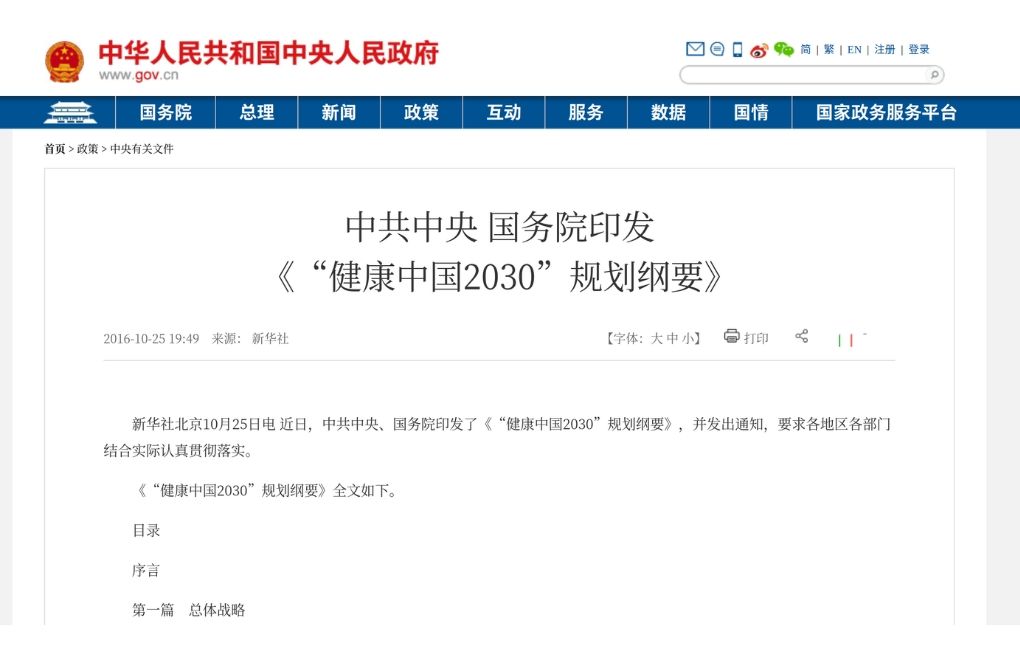
Improve access to health insurance coverage
The ambitious goal of health insurance coverage for 100% of the population. Now 95% of the Chinese people are covered by health insurance.
- This involves considerable efforts, since health insurance coverage, which had hardly existed since the economic reforms, has been gradually re-established since the 2000s (coverage estimated at 15.7% in 2004);
- To improve the supply of quality care, both outpatient and healthcare, in urban areas and in disadvantaged or remote rural areas (such as in western China).
The Ministry is therefore focusing on the quality of care by developing recommendations for good practice (for 112 most common diseases);
Develop community-based care
Community-based care has been developed with the construction or renovation of community health centers and the training of general practitioners (nearly 20,000 trained in 2011).
(A minimum of 307 medicines determined at the national level), fully or largely reimbursed, at the rates negotiated with the companies.
Modernize chinese public hospitals
Modernize public hospitals with the start of pilot projects in 16 cities in 16 cities to improve the status, management, operation, funding, and quality of involuntary and selected health facilities. This reform was extended to hospitals in 37 provinces at the end of 2010, and the city of Beijing hired 22 of its public hospitals in 2011.
Since 2009, an investment plan of 850 billion yuan (more than 92 billion euros) is devoted to this reform.
In three years, expenditure was higher than expected, requiring the allocation of an additional 280 billion yuan (366 million euros).
What are The Best Strategies to Enter China’s Health Market?
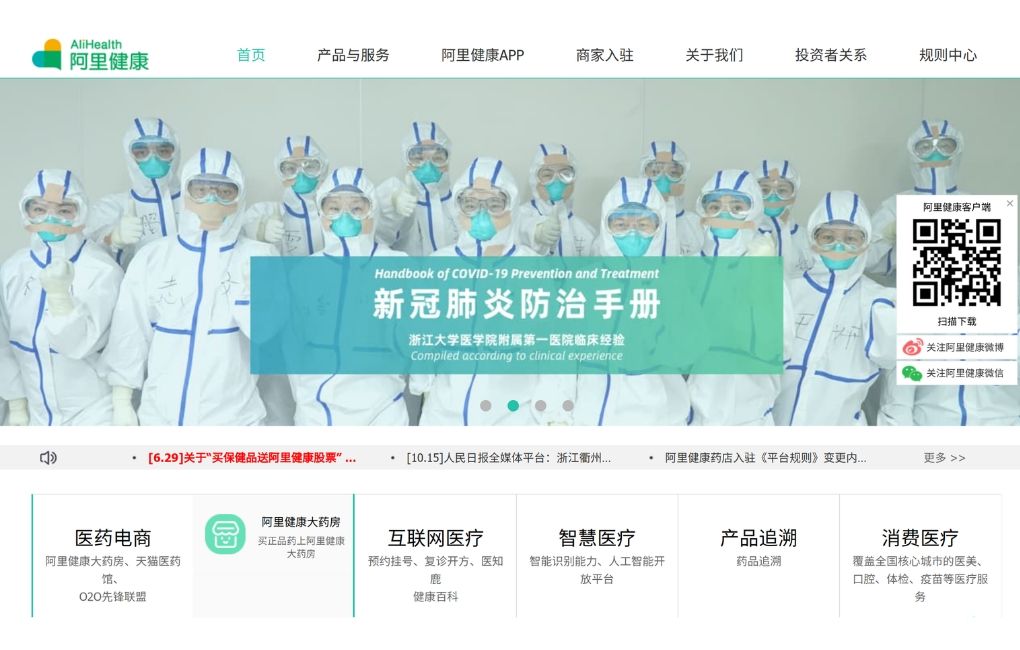
Just like all sectors in China, the healthcare field is developing under the influence of the Internet. More than 2000 mobile apps for healthcare have been launched, from simple medical advice to appointment booking, In the hope the middle-run tailored digital services will release some pressure for overcrowded hospitals.
So how you should approach this sector as a foreign brand?
Create a website to promote your health-related services
If you want to be more reliable and professional in the eyes of Chinese customers, create your own website in Chinese, hosted in China. As Chinese people like to search for information about what to buy before the real purchase, your website will not only be a way to tell your brand story but also give viewers more confidence.

However, it is good to know that Chinese viewers will probably not buy your products directly from your website, but on those e-commerce platforms on which they have a habit of purchasing. For example, Ali Pharmacy, as the picture above shows. So you can sell your products on this kind of platform specialized in healthcare.
Build your e-reputation on professional healthcare platforms
As of 2023, the most popular medical app in China is Ping An Good Doctor (平安好医生), a healthcare platform owned by the Ping An Insurance Group, with over 10.5 million monthly active users.
This healthcare platform provides real-time medical consultations, online appointment booking, and a health-related discussion forum. According to Statista, Ping An Good Doctor has more than twelve thousand healthcare service providers. These leading medical apps have gained popularity in China not only by saving the waiting time at hospitals effectively, but also by enhancing the communications between doctors and patients.

Ping An Good Doctor is an ideal platform to cooperate with in order to get visibility and e-reputation among Chinese customers. When it concerns health, the confidence of customers is very important. Especially after several scandals of domestic brands that happened in China, Chinese people prefer to purchase foreign brands. Imported brands are considered as reliable and of good quality.
Baidu SEM to boost your branding

Only having your website, even though it is the best in the world, you probably still have zero results, if you don’t promote it. The most effective channel for promoting a website is still search engine marketing (SEM).
In fact, SEM has become a very effective tool for China’s marketing strategy. When we talk about SEM, we first think about the leading SEM platform – Baidu, a Chinese equivalent to Google in essence. Baidu holds between 60 to 70% of the China search engine market. Being the second largest search engine in China, 360 Search is also a powerful alternative to Baidu.

Build your social media presence
In China’s healthcare market, tapping into social media is vital, with WeChat and Weibo boasting 1.2 billion and 580 million users, respectively. Building a robust online presence here is key. These platforms allow businesses to enhance brand awareness, interact with users, and boost website traffic. Sharing valuable content that resonates with Chinese users can foster loyalty.
Each social platform targets distinct demographics, so grasping these nuances is crucial for a savvy healthcare marketing plan.
WeChat (Weixin) is the country’s most used platform, attracting users of all ages, locations, and interests. It’s a must-have for any digital strategy, providing official accounts for publishing, group chats for community-building, and mini-programs for in-app services. For healthcare, you can share health articles, launch health assessments or appointment mini-programs, and build health-related communities.

LemonBox, a supplements company, made a WeChat mini-program for personalized supplement recommendations.
Weibo, likened to China’s Twitter, appeals to a slightly younger crowd. It’s great for viral marketing and important announcements. For healthcare, sharing health tips, research findings, product launches, and industry news on Weibo helps engage your audience.
Xiaohongshu (Little Red Book)
Xiaohongshu is a mix of social media and e-commerce, popular with urban, educated women aged 18 to 35. Users share reviews and tips. For healthcare, authenticity is key – user-generated content, like before-and-after stories or reviews, builds trust.
Douyin (TikTok in China)
Douyin is favored by Gen Z users, known for creative short videos. Visual content works well – demonstrate your products or share impactful patient stories. Riding trends and using popular music can broaden your reach on Douyin.
Remember, each platform serves different purposes and audiences, so tailor your content to each. Combining their strengths in a coordinated strategy can help you excel in China’s healthcare market.

Cooperate with local entities
Entering China’s healthcare sector, supplements, medical equipment, medical device market or any other comes with challenges, but forming partnerships with local entities is a strategic approach that can lead to success.
Begin by engaging with local Chinese government health commissions, which provide valuable insights and potential collaborative opportunities. Partnering with local hospitals and clinics will offer a deeper understanding of patient demographics and healthcare dynamics in China.
Embrace academic collaborations with Chinese research institutions to enhance innovation and establish credibility. Joining industry associations and professional networks connects you with key players in the field and ensures you stay up-to-date with the latest trends.
Additionally, take advantage of business development platforms that offer services like matchmaking and networking events, making your market entry into the health care industry there smoother and more effective. By fostering these local partnerships, the path to achieving success in the Chinese healthcare market becomes clearer and more attainable.

Why Choose Us for Your Chinese Healthcare Market Journey?
At Gentlemen Marketing Agency, we specialize in navigating the intricacies of the Chinese healthcare market, ensuring your successful entry and growth. Our expertise lies in crafting tailored strategies that align with the unique nuances of this dynamic landscape.

Here’s why you should choose us as your trusted partner:
- Market Insight: Our in-depth knowledge of the Chinese healthcare market empowers us to provide you with accurate market insights, enabling informed decision-making and strategic planning.
- Local Connections: We have established strong relationships with local government health commissions, hospitals, clinics, and academic institutions, ensuring seamless partnerships and access to vital resources.
- Cultural Understanding: Understanding the cultural nuances that impact healthcare preferences is crucial. Our team comprehends the cultural factors that influence consumer behavior and shapes effective marketing strategies.
- Industry Expertise: With years of experience in the healthcare sector, we possess a deep understanding of industry trends, compliance regulations, and consumer expectations, enabling us to position your brand effectively.
- Tailored Solutions: We believe in a personalized approach. Our strategies are designed to align with your unique goals, ensuring that your brand resonates with the Chinese audience and achieves optimal results.
- Digital Prowess: In the digital age, online presence is paramount. Our expertise in leveraging China’s social media platforms, digital tools, and business development platforms ensures your brand reaches its target audience effectively.
- End-to-End Support: From market entry strategies to execution and ongoing optimization, we provide comprehensive support throughout your journey in the Chinese healthcare market.
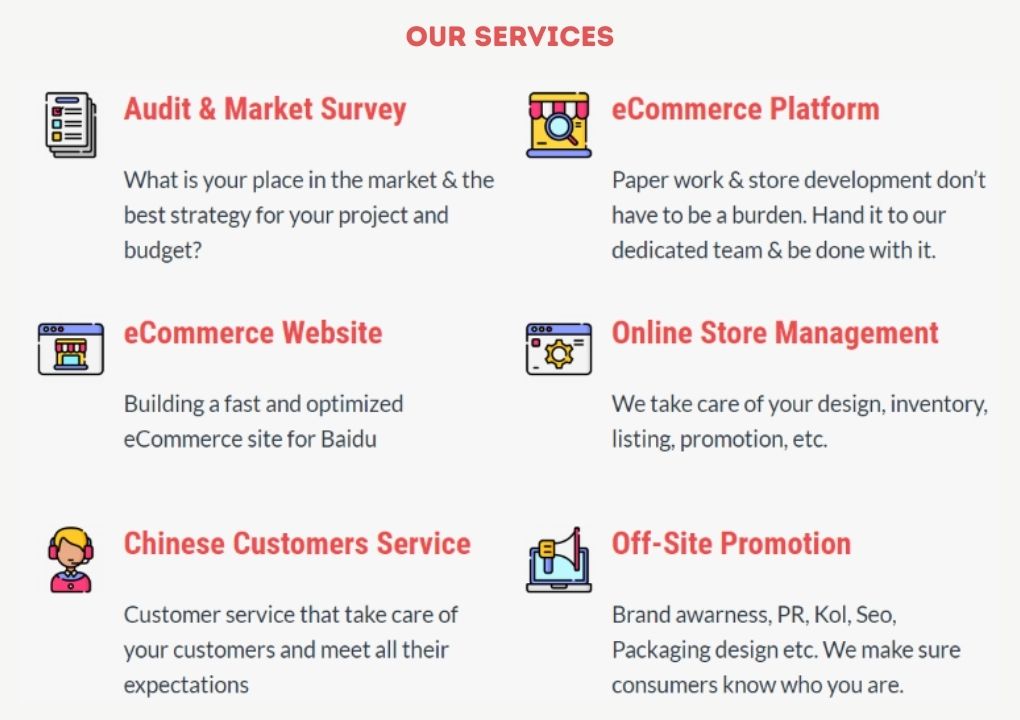
When you choose Gentlemen Marketing Agency, you’re choosing a dedicated partner committed to unlocking the immense potential of the Chinese healthcare market for your brand.
Our comprehensive approach, local insights, and industry expertise make us the ideal choice to guide you on this exciting journey. Contact us so we can start today!
